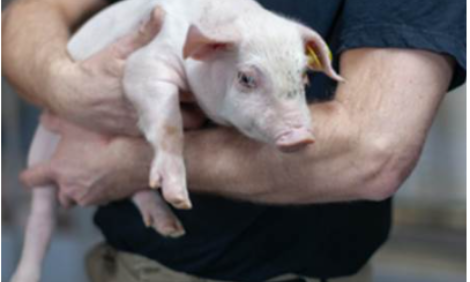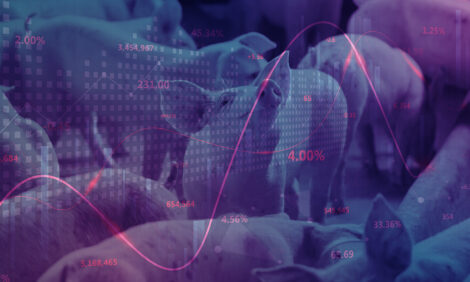



Comparison of Operation Sizes for Alberta Pork Businesses in 2001
By Graham Gilchrist, published by Bacon Bits - In September 2003, the Business Management Innovations Branch (BMI) of Alberta Agriculture, Food and Rural Development compared farm revenue sizes for hog businesses in Alberta. To do this, we examined the Statistics Canada Whole Farm Database.Three revenue sizes were compared for hog operations:
- $500,000 and over (500K)
- $250,000 to $500,000 (250-500K)
- $100,000 to $250,000 (100-250K)
Comparisons between revenue sizes were based on expenditures per kilogram (kg) of pork sold. BMI examined the financial performances of these hog operations, specifically looking for changes in the expenditures, as the revenue grew larger.
Six expense categories were used:
- Feed and Bedding (R250)
- Swine Purchases (R296) - breeding stock, weanlings, semen, etc.
- Crop Inputs (R2105) - for producers growing their own feed sources
- Salaries (R2121)
- Interest (R2126)
- Other - a grouping of expenses that individually were less than 5% of revenue (included utilities, building repairs, etc.)
Production Economics
A few assumptions were made for this analysis. These included an average carcass size of 89.6 kg, an average index grade of 109 and an average price of a 100 index hog of $1.65 per kg (Agriculture and Agri-food Canada). It was recognized that not all the Swine Revenue reported would be strictly from market hogs, but for this analysis, that assumption was made.
operation by cost per kilogram of pork sold in 2001.

Based on these assumptions and values for Swine Revenue, the estimates for the average kg of pork sold in 2001 for each revenue size are as follows:
- 500K - 848093 kg
- 250 to 500 - 153568 kg
- 100 to 250 - 71656 kg
Table 1 reports on the top six expenditures and their costs for each of the three revenue sizes used in the analysis. Figure 1 illustrates how the smaller revenue sizes compare to every dollar spent by the 500K group. For example, for every $1.00 spent on feed and bedding per kg sold by the 500K operation, the 250-500K operations spend $1.02 for the same kilogram sold.

Some Conclusions
Feed and animal purchases make up the largest costs in production. However, the feed input and the dollars generated from that feed are similar among all three revenue sizes. This balance indicates that most operations, regardless of size, are feed efficient. Animal purchases though, increase as revenue increases.
Inefficiencies become apparent when costs not directly associated with the operation are examined. As the operations and their revenue decreased in size, the smaller costs became more significant. This was the case for Crop Inputs, Interest and Other Expenses. However, Salary Expenses were lowest for the 250-500K operations.
Please note that other revenue sources, such as Crop Sales, Program Payments, and Custom work, were not included in the analysis, though they are important for the explanation of expenditure totals. By comparing just the costs of Swine Revenue, or kilograms sold, the analysis focuses on the strength of the revenue produced by hogs sold.
To visit their web site, click a link below.

|
Source: Bacon Bits - January 2004








